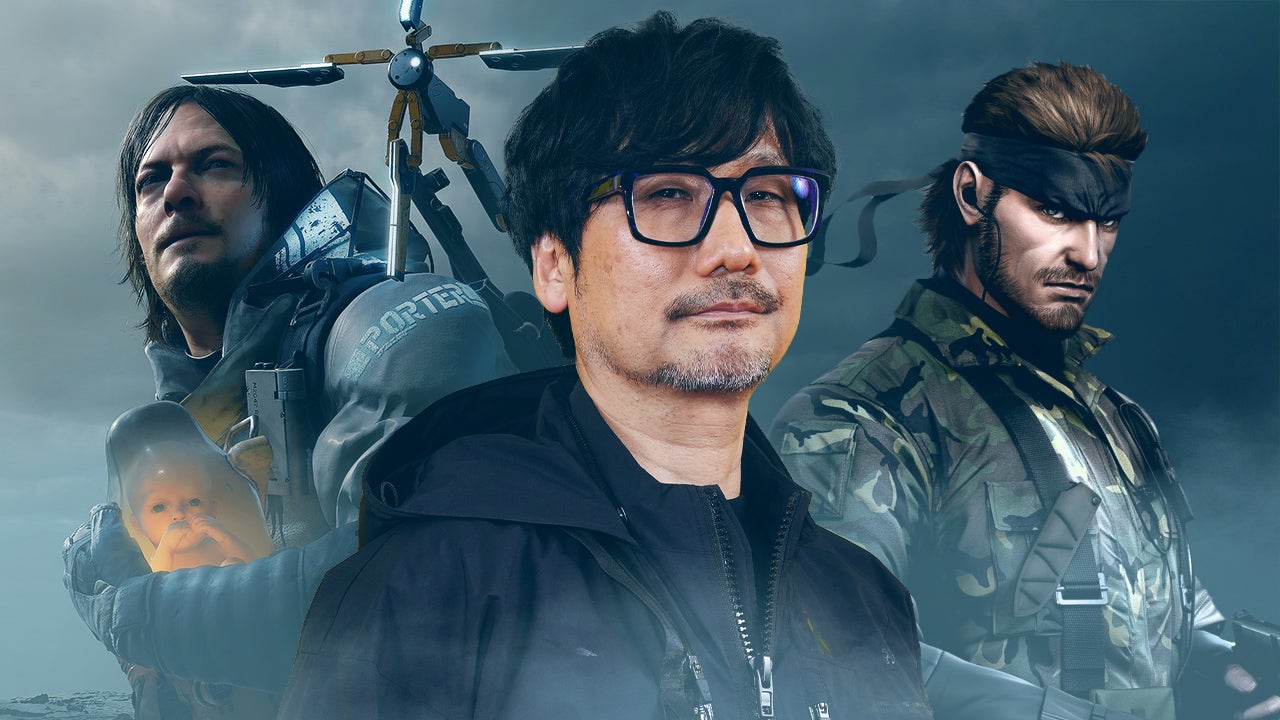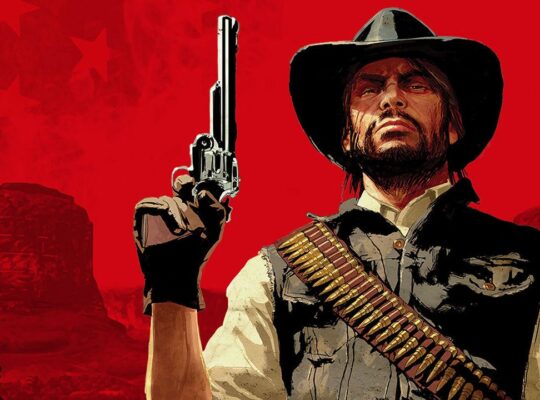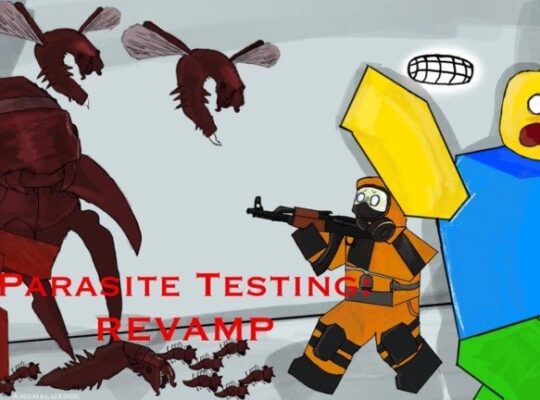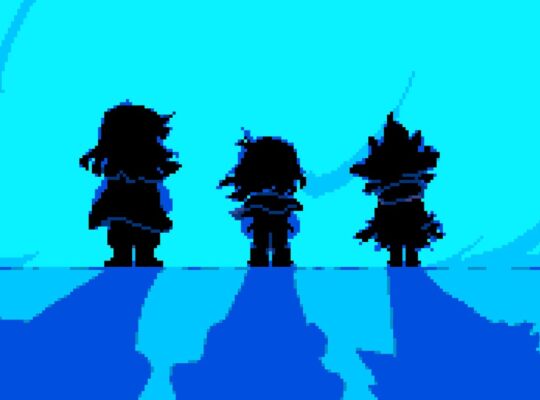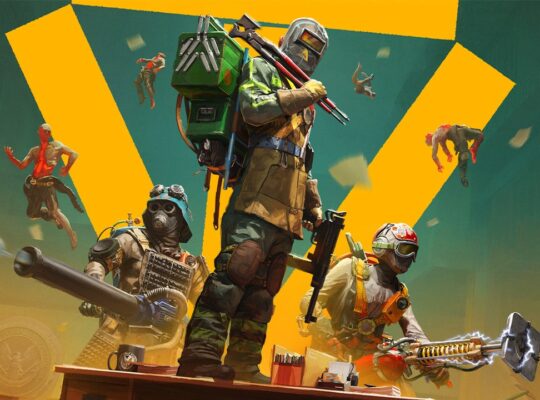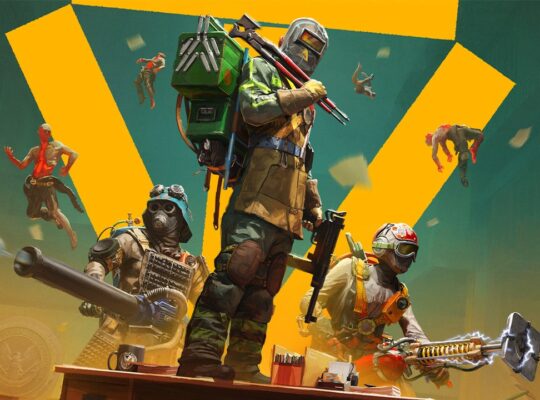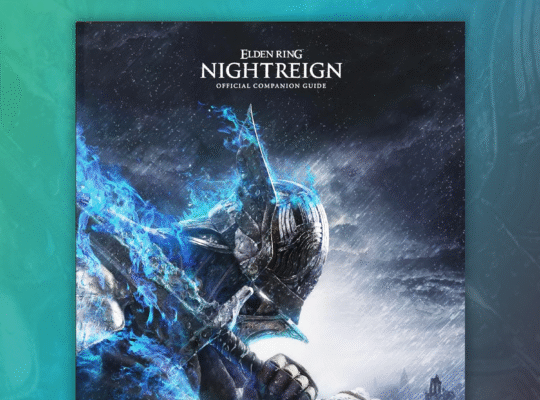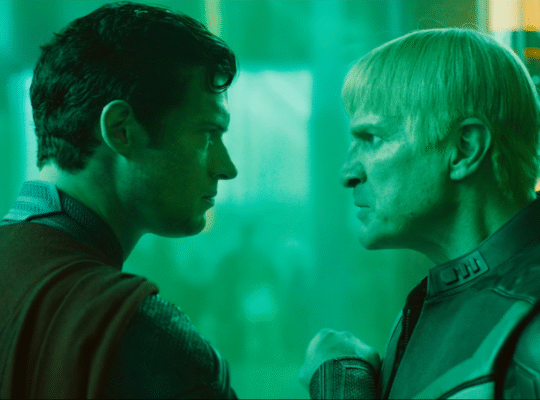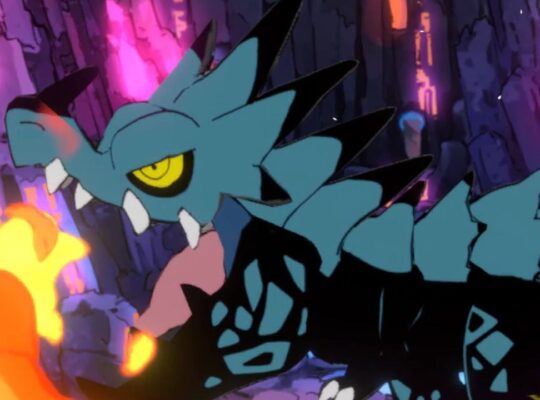
With the release of Death Stranding 2: On the Beach, director Hideo Kojima enters his fourth decade in game development as a director. While the celebrated “auteur” has spent the majority of his career so far working on the Metal Gear series, Death Stranding 2 sees him expanding upon his newest universe, where he both introduces new concepts and revisits some of his most enduring ideas.
With a truly staggering list of credits in his impressive resume, there’s no better time to revisit every genre-defying adventure Kojima has taken us on. Here is every Kojima game that he directed or designed, ranked from worst to best.
12. Policenauts
Before the Metal Gear Solid series took over his life, Kojima dabbled in the graphic adventure genre. One of his earliest games, Policenauts is a point-and-click, visual novel game for the PC-9821 billed as a hard science fiction detective story. Set in the not-too-distant future, players take on the role of Jonathan Ingram, an astronaut turned hard-boiled L.A. detective investigating a man’s disappearance. As a visual novel, Policenauts doesn’t have the level of gameplay innovations Kojima would eventually be known for, but this early work highlights how movies — in this case buddy cop films like Lethal Weapon — would seep into his video game works for years to come.
11. Snatcher
Before there was Policenauts, Kojima had already dabbled with graphic adventure games. Clearly influenced by cyberpunk stories like Blade Runner, Snatcher is set in a futuristic city where human-like robots known as Snatchers are murdering humans, with special members of the anti-Snatcher force tasked to stop them. While the plot may sound very derivative of Ridley Scott’s iconic movie, critics praised Snatcher for how Kojima took these ideas to even more extreme places with violence, humor, and an operatic scope that was ahead of most visual novels at the time.
10. Metal Gear 2: Solid Snake
Following the success of the very first Metal Gear, Konami pushed forward with a sequel called Snake’s Revenge that was being made entirely without any involvement from Hideo Kojima. Unaware a sequel was even being made, a coworker finally told Kojima about the sequel and convinced him to create a true follow-up to the 1987 original. While Metal Gear 2’s visuals are more sophisticated and its story introduces some important characters to the Metal Gear canon, Metal Gear 2 largely feels like a half-step. Thankfully, Kojima would go on to completely revolutionize the series with the 3D Metal Gear Solid games, eventually righting the wrongs of his iterative attempt at progress in Metal Gear 2: Solid Snake.
9. Metal Gear Solid 4: Guns of the Patriots
Metal Gear Solid 4: Guns of the Patriots was originally designed to be the finale of the series, capping off the Solid Snake storyline with a bang. This mega-budget, PS3 exclusive was released in 2008 and set a technological benchmark thanks to its breathtaking graphics and cinematics. Snake is back, but this time he’s aged significantly. The familiar faces of Otocon, Meryl, and Revolver Ocelot all return, as well as other fan-service surprises. Together, these characters work through a story that finally closes the book on an extremely complex tale that began with the very first Metal Gear game.
Despite being the dramatic final act in an iconic game series, MGS 4 also represents Kojima indulging in some of his worst creative tendencies. While the plot ties up a lot of loose storylines and gives Old Snake a hero’s farewell, the majority of cutscenes border on self-parody (including one character’s constant need to find a toilet) and Kojima, in general, seems too focused on his nostalgia for older games in the series, which has an impact on the overall execution of Solid Snake’s final tale. There are also a lot of big gameplay ideas here that aren’t fully fleshed out, perhaps due to the technological limitations of the PS3 – some of these mechanics, like active camo, would finally be refined in Metal Gear Solid 5. With all this in consideration, Metal Gear Solid 4, despite being an incredible spectacle in its own right, is our least favorite game from the Metal Gear Solid series.
8. Metal Gear
The original Metal Gear on the MSX2 was the game that started it all, introducing the world to the iconic Solid Snake. Metal Gear combines compelling (and revolutionary for the time) stealth action gameplay with a twisting story of Cold War era paranoia, nuclear proliferation, and espionage. You play as Solid Snake, a young member of the special forces group FOXHOUND sent to stop the development of a new weapon known as Metal Gear. Inspired by James Bond stories and the original Mission: Impossible TV series, Metal Gear stood out in 1987 thanks to a heavily twisting plot that culminates in Snake facing off against Big Boss, Snake’s commanding officer-turned-villain. Metal Gear’s unique stealth gameplay made waves at the time and although its plot was relatively simple, it would end up starting one of the greatest decade-spanning stories in gaming history.
7. Death Stranding
Death Stranding was a complete departure for Kojima and his first game developed outside of the walls of Konami. Starring Norman Reedus as the post-apocalyptic mailman Sam Porter Bridges, the game is less about sneaking past Soviet agents and more about sneaking past goopy monsters from beyond the astral plane. Despite all the sneaking action, this time around stealth takes a backseat to lots and lots and LOTS of walking. While Death Stranding indulges in heavy use of sponsored products, bizarre character names like Die Hard Man, and an aggressive number of celebrity cameos, underneath all that questionable content might be one of Kojima’s most prophetic stories yet. Set in a world where humans are painfully disconnected from each other due to an apocalyptic event that forces everyone to seclude in bunkers, Death Stranding was actually released before the COVID-19 pandemic. The journey of Sam Porter Bridges as he goes on foot to re-connect the United States with a mystical form of the internet feels like something written in 2023 with all the experience of an isolating lockdown, instead of a game that began development several years prior.
6. Metal Gear Solid: Peace Walker
When Kojima announced the PSP-exclusive Metal Gear Solid: Peace Walker, he made clear that this was a full-fledged, canonical entry into the Metal Gear series with ramifications for the overarching storyline. And he wasn’t bluffing. The events of Peace Walker, which is set after Metal Gear Solid 3: Snake Eater, forms a substantial chapter in the legend of Big Boss and Outer Heaven, and plays directly into the events of Metal Gear Solid 5: The Phantom Pain.
Kojima found a way to cut up his stealth-action gameplay into bite-sized chunks that are perfect for on-the-go fun. Despite the limited technical capabilities of the PSP, mechanically this might be one of the most fun and creative games in the Metal Gear series. New systems like base building, weapons R&D, and recruiting enemy soldiers by fulton-ing them up into space means that Peace Walker not only delivers way beyond expectations for a handheld game, but also stands out as an excellent addition to the series in its own right. These mechanics and plot connections go on to reappear in Metal Gear Solid 5, proving how vital Peace Walker is to the entire Metal Gear canon.
5. Metal Gear Solid 5: The Phantom Pain + Ground Zeroes
Metal Gear Solid 5: The Phantom Pain would end up being Kojima’s last Metal Gear game, but in our opinion he left the franchise on a banger, with Metal Gear Solid 5 being the best-playing Metal Gear game in the entire series. Combining decades of stealth action experience and every mechanic Kojima ever fiddled with, MGS 5’s stealth combat feels better than ever. That’s largely thanks to the variety of tools and weapons that can be mixed and matched, ensuring you can infiltrate using your exact preferred playstyle. Want to go in guns blazing on an enemy camp? No problem. Prefer to be the sneaky stealth warrior utilizing camouflage, distractions, and even the time of day to your advantage? You can do that, too.
Metal Gear Solid 5 and its prologue, Ground Zeroes, is set after the events of Metal Gear Solid 3 and Peace Walker, focussing once more on Big Boss’ quest to build a private army in the middle of the ocean. If we’re being uncharitable, Metal Gear Solid 5’s big twist feels like Kojima put a lot of effort to explain how Big Boss survived the first Metal Gear game. But Metal Gear Solid 5 feels more like a tone piece where Kojima gets to explore the many horrors of war. From child soldiers, torture, and chemical weapons, to other nightmarish scenarios born of humanity’s never-ending thirst for conflict. Yes, on the whole, the events of MGS 5 don’t affect the overall canon of Metal Gear too much, but by the end of the experience you will begin to feel ashamed for your words and deeds.
4. P.T.
One of gaming’s most famous almosts. P.T. (or Playable Teaser) was meant to be an interactive preview for Kojima’s Silent Hills, the doomed-to-be-cancelled next installment in Konami’s legendary horror series starring Norman Reedus and developed in collaboration with director Guillermo del Toro. P.T was something of a demonstration of Kojima’s intent for that project. At just a couple of hours long, P.T. is set almost entirely within the confines of a single hallway in a non-descript, American house, and is genuinely one of the most terrifying games of all time.
Trapped in a loop, you are forced to endure terrifying events on every lap of the house, such as the radio recounting a gruesome murder, unimaginable horrors found in the bathroom, and a blood-chilling ghost stalking your every move. This self-contained teaser is so full of terrifying ideas that it’s truly a tragedy that Kojima never got a chance to complete Silent Hills. P.T., however, is so satisfying that even though it can barely be considered a full game, it still feels like a complete experience.
3. Metal Gear Solid 2: Sons of Liberty
Kojima famously said that there was a chance that Metal Gear Solid 2: Sons of Liberty would never be released. Scheduled to hit shelves in 2001, a few months after the events of September 11, Kojima explained to Konami’s board of directors the story of Metal Gear Solid 2 and, from his recollection, “they all turned pale”.
Set against a backdrop of government conspiracies, United States war profiteering, and presidents-turned cyborg warriors, Metal Gear Solid 2 is proof that Kojima’s thematic obsessions with nuclear proliferation, memes, and the military-industrial-complex aren’t just for show. He even goes as far as to replace everyone’s favorite Solid Snake with newcomer Raiden to hammer home his points about how the world operates under the shadow of duplicity, and you can never trust anyone to be who they really are (and also because Kojima really did want to introduce a younger playable character to the series).
Metal Gear Solid 2 is such an astronomical leap above the first Metal Gear Solid in terms of gameplay that it’s hard to believe the two games were released just three years apart. It’s Metal Gear Solid on steroids thanks to massively improved graphics that truly capture Kojima’s cinematic intentions, and controls that finally give Snake and Raiden the proper tools to be the ultimate stealth warriors.
2. Metal Gear Solid 3: Snake Eater
Metal Gear Solid 3 is considered one of the greatest games of all time, and rightly so. With the third entry in his ever-popular series, Kojima took on his biggest challenge yet. Gone are the narrow corridors, tankers and military bases as Metal Gear Solid 3 welcomes the open jungles of the southern USSR. Naked Snake, the code name for the character who’d eventually go on to be called Big Boss and our hero this time around, is forced to brave harsh environments crawling with Soviet soldiers, perform emergency on-the-field first aid, and eat whatever creatures he could catch in the wild (hence that subtitle). It was the ultimate marriage of stealth combat and survivalist wish-fulfilment that would go on to inspire games like Escape From Tarkov.
With Metal Gear Solid 3, Kojima created one of history’s best tributes to James Bond. Snake’s mission brings him face to face with disfigured villains, sees him fall for a mysterious femme fatale, and is even prefaced by a big, brassy theme song that’s a clear homage to 007’s best intros. But while it features a checklist of Bond’s key tropes, there’s a deep and emotionally resonant story beneath them all: Naked Snake is forced to confront his former mentor, who defects to the Soviet Union to ally herself with the certifiably insane Colonel Volgin. A treatise on the global divisions caused by the Cold War and a continuation of his long-running anti-war themes, Metal Gear Solid 3 stands at the pinnacle of playability, storytelling, and technical achievement.
1. Metal Gear Solid
Metal Gear Solid is the game that put Kojima on the map. While the older Metal Gear games were lauded for their creative gameplay, 1998’s Metal Gear Solid on PlayStation took that innovation and creativity to the next level. At the time, its cinematic storytelling techniques were considered second to none (and even by today’s standards, it remains special), its interactive movie-like presentation demonstrating Kojima’s love and understanding of cinema. The plot of a special ops soldier sneaking into a remote military base to take down a stolen nuclear weapon may be simple compared to some of the later games’ deep lore wells, but it became an instant and enduring classic.
With Metal Gear Solid, Kojima’s extraordinary skills as a game developer are clear to see. Advanced stealth mechanics that made extensive use of enemy vision cones, a variety of unique and ingenious boss battles, and uncovering brilliant surprises such as having your game controller “taken over” by Psycho Mantis are long-standing reminders that Kojima’s ideas about how players can interact with video games (and how video games can interact with their players) were ahead of their time. In an era where so many game developers were focused on pushing the boundaries of graphics and gameplay, Kojima managed to stand head and shoulders above the rest, pushing the medium forward in ways few others could dream of. With MGS, Kojima evolved how games look, play, tell stories, and ultimately, mature.
Metal Gear Solid is a true masterpiece. It’s the game that created the blueprint for generations to come, and truly is Hideo Kojima’s Magnum Opus.
And that’s every Hideo Kojima game ranked. Disagree with our picks? Let us know which Kojima game is your favorite in the comments below.
Matt Kim is IGN’s Senior Features Editor.


